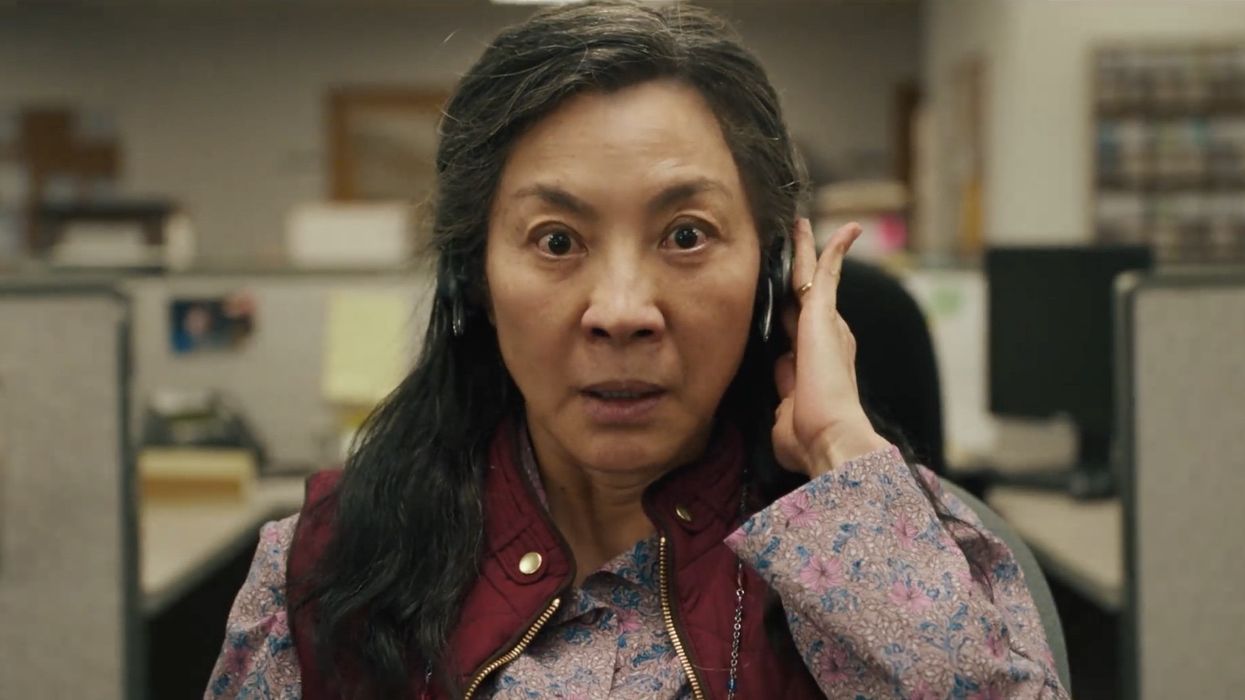From Tax Audits to the Multiverse: Editing 'Everything Everywhere All at Once' in Adobe Premiere Pro
Learn how editor Paul Rogers and director pair the Daniels edited a key scene for the hit film.

In between superhero spectacle and family-friendly animated fare, a surprise indie hit is making its way into international theaters and the cultural consciousness. Everything Everywhere All at Once follows Evelyn Wang, played by Michelle Yeoh, as she does laundry, confronts a tax audit, and fights to save the multiverse. While the film has become known for its universe-hopping action, writers and directors Daniel Kwan and Daniel Scheinert (collectively known as the Daniels) say that it’s about family at heart.
“In the end, it’s really just about a family trying to find each other in the noise of modern life, and the multiverse is a perfect metaphor for that,” Kwan said.
The Daniels sat down with editor Paul Rogers for an Adobe Editor Spotlight to discuss how they used Adobe Premiere Pro to edit a pivotal scene: an unassuming tax audit that evolves into something much more.
Here are a few insights from the video.
Working in Frame.io
Communication between directors and editors is critical for any movie. The Daniels and Rogers knew that the audit scene would set the tone for all that’s to come in the movie, and they needed to find just the right balance. The trio took advantage of the integration between Adobe Premiere Pro and Frame.io for seamless collaboration.
The Daniels could pause at a specific timestamp, draw on the frame, and type in detailed feedback. All of those notes are applied to Rogers’ Premiere Pro timeline as markers, making it fast and easy to jump to any note and work on it. The result was a scene that captured everything Rogers and the Daniels were wanting to see throughout the movie.
Adding effects in Premiere Pro
The special effects in Everything Everywhere All at Once rival large franchise blockbusters, perfectly capturing the otherworldly feel of protagonist Evelyn slipping through time and space. Many of the effects started in Premiere Pro. A lot of the multiverse transitions involve speed ramping, which Rogers pulled off using Time Remapping.
For more complex visual sequences, Rogers created temporary effects in Premiere Pro to better illustrate the Daniels’ vision for the special effects team. For example, the movie represents the transition between universes by showing the screen shattering like broken glass. Rogers used a sliding split-screen effect in Premiere Pro to approximate the look of the shattered glass, helping show the special effects team which shots to combine and the desired pacing of the transition.
“There were a lot of temp effects that were easy to mockup in seconds,” Rogers said. “Premiere Pro was just like, ‘Yeah, you can do that.’ And it was great.”
Embracing the language of film
The tax audit scene sets—and then subverts—audience expectations to help them understand what’s in store. The scene starts in a mundane tax office, filmed with quiet background noise, little camera movement, and slow edits.
“It was important to us to have the visual language and editing pace be nice and simple for this first section so that you really feel something shift,” Rogers said.
As the scene ramps up, the Daniels add in dramatic zooms, dolly shots, unnerving music, time ramping, and quick transitions. In other words, they begin filming a tax audit like an action scene. The audience can feel the tension, preparing them for the wild ride to follow.
Watch the Adobe Editor Spotlight video with Paul Rogers and the Daniels discussing a pivotal scene from Everything Everywhere All At Once.
What do you think of the editing in that scene? Let us know in the comments.
















